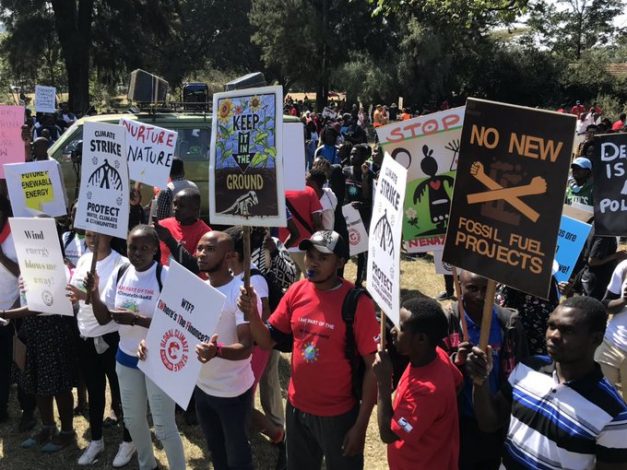Africa’s Gross Domestic Product (GDP) risks contracting by up to 30 per cent by the year 2050 if action is not taken, Kenya’s President Uhuru Kenyatta.
Kenyatta noted that climate change will have a devastating socio-economic impact across the world and quite severely in Africa.
“While it is relatively more difficult to design and implement adaptation projects and while fewer resources are currently available for adaptation, we should not lose sight of the fact that adaptation is, without doubt, smart economics,” he said.
“An investment of $800 million in developing countries, in climate adaptation programs, would see and result in benefits of up to $16 billion per year,” Kenyatta said.
His message was contained in a recorded video address delivered Tuesday at a hybrid conference hosted by the University of Nairobi in partnership with the Global Centre on Adaptation (GCA) to celebrate the Africa Adaptation Acceleration Day, a precursor to the United Nations Climate Change Conference (COP26) that will be held in Glasgow, Scotland.
The COP26 summit will bring parties together to accelerate action towards the goals of the Paris Agreement and the UN Framework Convention on Climate Change.
In March, Kenyatta told the African Union Peace and Security Council on climate change that “Climate change is a key defining development and the foremost emerging security challenge of our time. It acts as a ‘multiplier’ of existing threats to international peace and security.”
Kenya intends to invest $8 billion over the next decade on climate change adaptation projects. “This is just 10 per cent of the total investment needed of the NDCs and we, therefore, need support from our international partners,” the President said.
Some of the current initiatives being implemented by Kenyan the 10-year action plan is to raise its tree cover to 10 per cent by 2030.
Kenya’s climate change plan prioritizes renewable energy sources such as solar and wind, and the introduction of climate-smart interventions in the transport sector such as the Bus Rapid Transit (BRT) system integrated with non-motorised transport for the City of Nairobi.
What $34Mn Project Can do to Tackle Effects of Climate Change in Kenya
Consequently, the President rallied the global community to support the accelerated rollout of adaptation programmes in Africa so as to mitigate against the growing adverse effects of climate change as well as strengthen the continent’s resilience.
The second part of the Groundswell report says in the worst-case scenario, Sub-Saharan Africa will be the most vulnerable region due to desertification, fragile coastlines and the population’s dependence on agriculture would see the most movement, with up to 86 million climate migrants moving within national borders.




